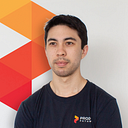Yep good question. This is where it depends on where your starting point is for discovery. Yes you’re right that in discovery we should start in the problem space and move to the solution. Best practice though is to still follow this process for your solutions too.
For example, you would start in the problem space, your assumptions would be focused there and not about the solution, but over time after you validated the problem space you will start to ideate and have potential solutions. At this point it’s worth doing an assumptions map again — this process is repeatable and it’s common to do multiple cycles of it — this time they will be all the assumptions you’re making about the potential solution. Test those assumptions and then progress to delivery, etc.
I said this in a reply to another question which might also help clarify:
So this process is repeatable. It’s not uncommon to go through multiple cycles. Depending on where your starting point is, you may start at the problem/opp space. Do an assumptions map, run some experiments to validate the opp/problem and then you will ideate solutions and then repeat. What assumptions do you have on these solution ideas — experiments, test, validate, etc.You can also start with an ‘idea’ — what assumptions am I making about the idea, this in itself shoulduncover assumptions you’re making about the need/problem that it solves. You will likely then want to test that assumption. This may then lead you to do an assumptions map on the problem and repeat the same process as above.
I hope that makes sense and answer your question.
